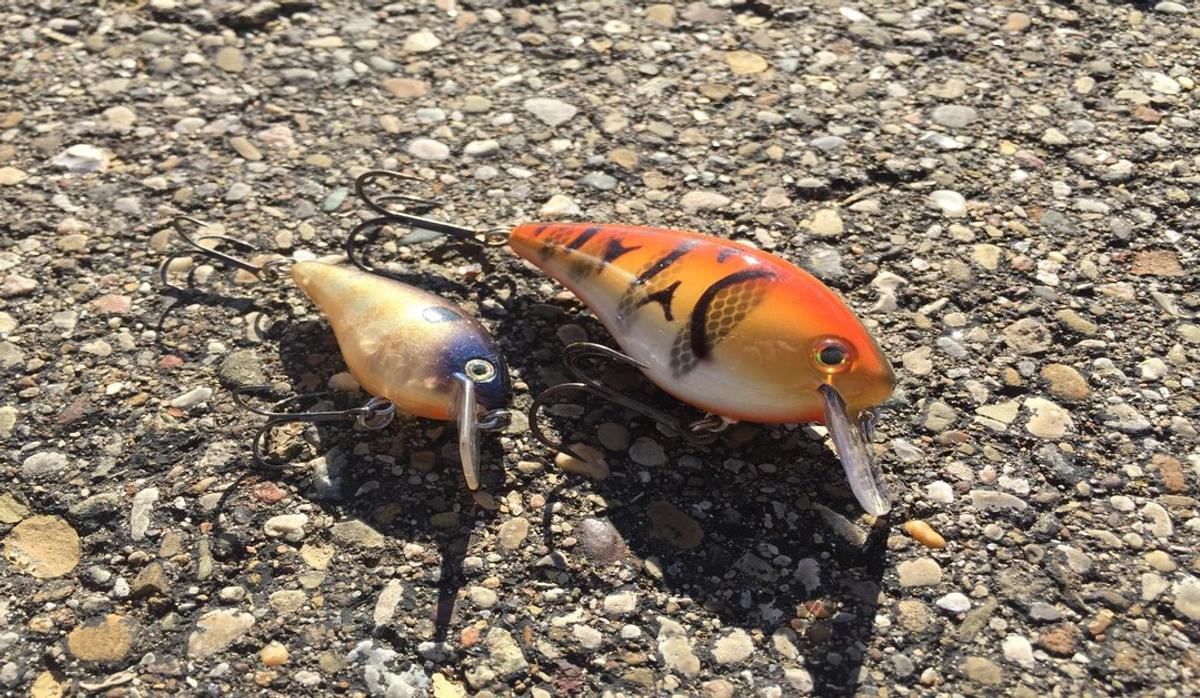Big Bait Primer – When And Where And How To Throw Oversized Lures
The big bait phenomenon was born in Southern California in the late 1980s when anglers began heaving trout imitating swimbaits and destroying the giants that fed on stocked rainbow trout. For the next ten years or so, state and lake records fell like dominoes and there were countless double-digit bass brought to the scales by 6, 7, 8-inch baits and larger.Other than a steady dose of big fish pictures from western lakes though, the status quo remained relatively unchanged across the rest of bass country for the next 20 years.Fast forward to today, and that paradigm has been turned upside down. In the last 5 years, anglers have figured out how to utilize oversized lures effectively in the lakes and reservoirs of the east, and major tournaments are routinely won by anglers chucking blobs of plastic that even 5 years ago would have been relegated to the west coast angler’s arsenal.As effective as they can be though, big baits have still not become commonplace for many recreational anglers, and the primary reason is because they require both special circumstances and dedication to master.Across the last several months, we’ve been able to sit down with some of the best in the business at throwing big baits, and have put together the following guide to help big bait rookies flatten their learning curves.
When?
From a seasonal perspective, oversized lures are actually effective almost all year, with the caveat that they still need to be imitating what bass are feeding on that particular time of year. For example, although you may be able to fool a California bass with a big trout imitator 12 months of the year, in the rest of the country the forage species change as the seasons progress.In the pre-spawn, bass feed on bigger holdover shad from the previous year making big shad imitators effective. Once the bass go to bed, they’re more likely to get off the shad bite and focus on bluegill, so throwing big bluegill baits is effective throughout that period and throughout the early summer. Then once the bass move offshore, they go back to feeding on big gizzard shad or perch, so switch it back up to shad or perch imitators.Essentially, you can catch them on big baits all year, as long as they imitate what the bass are eating.
Where?
For there to be a good big bait bite, there first needs to be big forage available in the lakes you fish. Throw a big gizzard shad imitator in a lake that’s only got bluegill or smaller threadfin shad and you’ll probably strike out.Do a little research into the forage base of your favorite lake and tailor your presentation to match the biggest forage species that’s actually available. In many lakes throughout the south, the big bait bite is a gizzard shad bite, but in lakes with only bluegill or perch, you’re better off choosing a swimbait that imitates their hues and actions.
How?
The best places to target bass with big baits are places that the bait congregates naturally. If you’re throwing a gizzard shad imitator, you should target offshore haunts like ledges, humps, and shell bars. If you’re throwing a bluegill imitator, try around laydowns, grass edges, and docks. If it’s big perch the bass are feeding on in your home lake, work the deep grass and mud flats that the schools of perch cruise.From a mechanics standpoint, learn how fast your bait of choice sinks, and count it down to make sure that you’re covering the right depth. Big bait fishing is also one of the best times to become fluent in reading your electronics. Spending a couple hours idling to find an area loaded with gizzard shad or perch before you fish is going to result in more success than just going out and blindly lobbing a bait at the closest piece of structure.
Gear up
Hucking a 3 ounce swimbait all day can take a serious toll on your muscles if you’re not prepared. Hook a giant bass on gear not up to the task, and you’re probably going to be left with nothing but a story. Gear up with a 7 ½ or 8 foot extra-heavy swimbait rod, a large capacity reel, and heavy 25 pound fluorocarbon. Make sure your hooks are extra sharp and keep a good landing net close at hand.
Updated November 17th, 2015 at 3:49 PM CT


